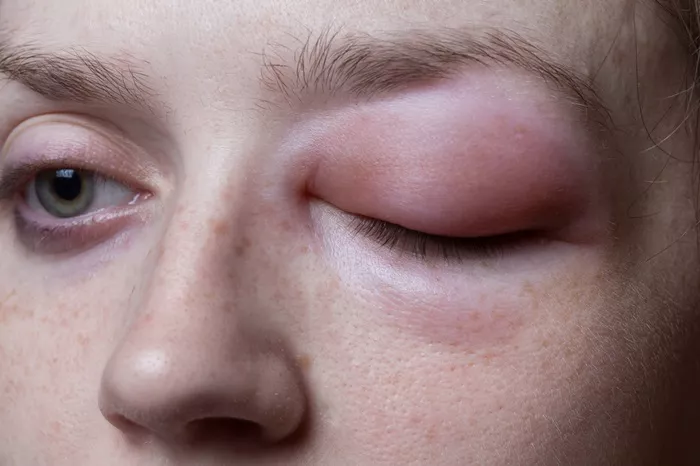Mold allergies are a common issue, especially in regions with high humidity or in areas where water damage has occurred. Mold spores are microscopic particles released into the air as mold grows on surfaces like wood, carpets, or walls. These spores can trigger allergic reactions in sensitive individuals, leading to symptoms such as sneezing, coughing, nasal congestion, watery eyes, and even asthma-like symptoms. Mold allergies can occur year-round, but they often worsen in the fall and spring when mold levels are higher due to moisture and changes in temperature. For those struggling with mold allergies, finding the right allergy medicine can make a significant difference in managing symptoms and improving quality of life. In this article, we will explore the different types of allergy medications available to treat mold allergies, how they work, and which ones may be the most effective for your symptoms.
Understanding Mold Allergies
Mold is a type of fungus that thrives in damp, warm, and poorly ventilated areas. It can grow on organic materials such as wood, drywall, fabric, and paper. Mold spores, which are produced as part of the mold’s reproductive process, are released into the air and can easily be inhaled. When inhaled by individuals with a mold allergy, these spores can trigger an immune system response, causing inflammation in the respiratory system. The body’s immune system mistakenly identifies mold spores as harmful invaders, releasing chemicals like histamines to fight off what it perceives as a threat. This immune response leads to the common symptoms of mold allergies.
Symptoms of mold allergies are similar to those of other environmental allergies and may include sneezing, nasal congestion, a runny nose, watery eyes, coughing, wheezing, and itchy skin. In some cases, mold allergies can also trigger asthma symptoms, such as shortness of breath or chest tightness. The severity of symptoms can vary depending on the individual’s sensitivity to mold and the level of mold exposure. Some people may experience mild symptoms, while others may have more severe reactions, especially if they are exposed to high levels of mold over an extended period.
While it is impossible to completely eliminate mold from the environment, there are steps you can take to reduce exposure, such as using dehumidifiers, improving ventilation, and cleaning moldy surfaces. However, even with these precautions, many individuals with mold allergies require medication to manage their symptoms effectively. There are several types of allergy medications that can help control mold allergy symptoms, each targeting different aspects of the immune response.
Types of Allergy Medications for Mold Allergies
When it comes to treating mold allergies, several types of medications are available. These medications can help alleviate symptoms by blocking the immune system’s response to allergens, reducing inflammation, or controlling mucus production. The most commonly used medications for mold allergies include antihistamines, nasal corticosteroids, decongestants, leukotriene inhibitors, and allergy shots (immunotherapy). In this section, we will look at each of these medications in detail to understand how they work and which may be most effective for treating mold allergies.
Antihistamines
Antihistamines are one of the most widely used types of allergy medications. They work by blocking the action of histamine, a chemical that is released by the immune system during an allergic reaction. Histamine is responsible for many of the common symptoms of allergies, including itching, sneezing, and runny nose. By blocking histamine receptors, antihistamines can help reduce these symptoms.
There are two main types of antihistamines: first-generation and second-generation. First-generation antihistamines, such as diphenhydramine (Benadryl), are effective at relieving allergy symptoms but can cause drowsiness, which may interfere with daily activities. Second-generation antihistamines, like loratadine (Claritin), cetirizine (Zyrtec), and fexofenadine (Allegra), are less likely to cause drowsiness, making them a better choice for people who need to remain alert throughout the day.
Second-generation antihistamines are generally considered the best option for treating mold allergy symptoms because they are effective at reducing sneezing, runny nose, and itching without causing significant sedation. These medications are available over the counter and are often the first line of defense for people with mold allergies. For individuals who experience more severe symptoms or need additional relief, antihistamines can be used in combination with other allergy treatments.
Nasal Corticosteroids
Nasal corticosteroids are one of the most effective treatments for allergic rhinitis (inflammation of the nasal passages caused by allergies), including mold allergies. These medications work by reducing inflammation in the nasal passages, which helps alleviate symptoms such as nasal congestion, runny nose, and sneezing. Nasal corticosteroids can also reduce post-nasal drip, which occurs when mucus from the nose drips down the back of the throat, leading to coughing and throat irritation.
Common nasal corticosteroids include fluticasone (Flonase), mometasone (Nasonex), and budesonide (Rhinocort). These medications are available over the counter or by prescription, depending on the specific product. Nasal corticosteroids are typically used as a first-line treatment for people with moderate to severe allergic rhinitis, and they are particularly helpful for controlling symptoms caused by mold allergies. They are most effective when used regularly, so it’s important to follow the dosing instructions and use them consistently for the best results.
Unlike oral antihistamines, nasal corticosteroids are delivered directly to the nasal passages, where the inflammation occurs. This targeted approach helps minimize side effects and provides more effective relief. However, nasal corticosteroids may take a few days to reach their full effect, so it’s important to start using them early in the allergy season.
Decongestants
Decongestants are another type of medication commonly used to treat mold allergy symptoms, particularly nasal congestion. These medications work by narrowing the blood vessels in the nasal passages, which reduces swelling and allows air to flow more freely through the nose. Decongestants can provide fast relief from nasal stuffiness, making them helpful for people who are struggling with congestion caused by mold allergies.
Decongestants are available in both oral and nasal spray forms. Oral decongestants, such as pseudoephedrine (Sudafed), are effective at relieving nasal congestion, but they can cause side effects like increased heart rate, jitteriness, and insomnia. Nasal decongestant sprays, like oxymetazoline (Afrin), provide quick relief but should not be used for more than three consecutive days, as prolonged use can lead to rebound congestion.
While decongestants can be helpful in managing nasal congestion, they should be used with caution and not as a long-term solution. Overuse of decongestants can lead to side effects, and in some cases, they may even worsen symptoms over time. For this reason, decongestants are generally used in combination with other allergy medications, such as antihistamines or nasal corticosteroids, for better overall symptom management.
Leukotriene Inhibitors
Leukotrienes are chemicals that the body produces during an allergic reaction. They contribute to inflammation in the airways and can cause symptoms like nasal congestion and difficulty breathing. Leukotriene inhibitors, such as montelukast (Singulair), work by blocking the action of leukotrienes, helping to reduce inflammation and control symptoms associated with mold allergies.
Leukotriene inhibitors are often used in combination with other allergy medications, such as antihistamines or nasal corticosteroids, for better symptom control. They are particularly useful for individuals who experience asthma-like symptoms along with their mold allergies, as leukotriene inhibitors can help prevent bronchoconstriction (narrowing of the airways) and improve breathing. While leukotriene inhibitors are not typically used as a first-line treatment for mold allergies, they can be beneficial for people with more severe or persistent symptoms.
Immunotherapy (Allergy Shots)
Immunotherapy, also known as allergy shots, is a treatment option for individuals with severe or persistent mold allergies that do not respond to medications. Immunotherapy involves regular injections of small amounts of allergens, which are gradually increased over time. This process helps desensitize the immune system to the allergen, reducing the severity of allergic reactions over time.
Allergy shots can be very effective for individuals with mold allergies, as they target the underlying cause of the allergy rather than just managing symptoms. However, immunotherapy requires a long-term commitment, as it typically takes several months or even years to see significant results. Allergy shots are administered under the supervision of an allergist and require regular visits to the doctor’s office.
While immunotherapy is not suitable for everyone, it can be an excellent option for individuals with severe mold allergies who are looking for a long-term solution. In addition to reducing allergic reactions, allergy shots can also help decrease the need for medications over time.
Which Allergy Medicine Is Best for Mold?
The best allergy medicine for mold depends on the severity of your symptoms, your personal preferences, and how well you respond to different treatments. For mild to moderate symptoms, second-generation antihistamines, such as loratadine (Claritin), cetirizine (Zyrtec), or fexofenadine (Allegra), are usually sufficient to control symptoms like sneezing, itching, and a runny nose. These medications are available over the counter and are typically well-tolerated with minimal side effects.
For individuals with more severe symptoms or persistent nasal congestion, nasal corticosteroids, such as fluticasone (Flonase) or mometasone (Nasonex), are often the most effective treatment. Nasal corticosteroids help reduce inflammation in the nasal passages and are particularly helpful for controlling symptoms like nasal congestion and post-nasal drip.
If nasal congestion is the primary symptom, a decongestant like pseudoephedrine (Sudafed) can provide quick relief. However, decongestants should not beused for long periods, and they are most effective when used in combination with other allergy medications.
For individuals with asthma-like symptoms or more severe allergy reactions, leukotriene inhibitors like montelukast (Singulair) or immunotherapy (allergy shots) may be necessary. These treatments help reduce inflammation and control symptoms over the long term.
Conclusion
Mold allergies can be challenging to manage, but with the right medications, symptoms can be controlled effectively. The best allergy medicine for mold will depend on the individual’s symptoms, severity, and response to treatment. Antihistamines, nasal corticosteroids, decongestants, leukotriene inhibitors, and immunotherapy are all viable options for treating mold allergies. It’s important to consult with a healthcare provider to determine the best treatment plan for your specific needs and to ensure that you are using the most appropriate medications for your symptoms. With proper treatment, mold allergy sufferers can enjoy relief and better quality of life during allergy season.
Related Topics

































